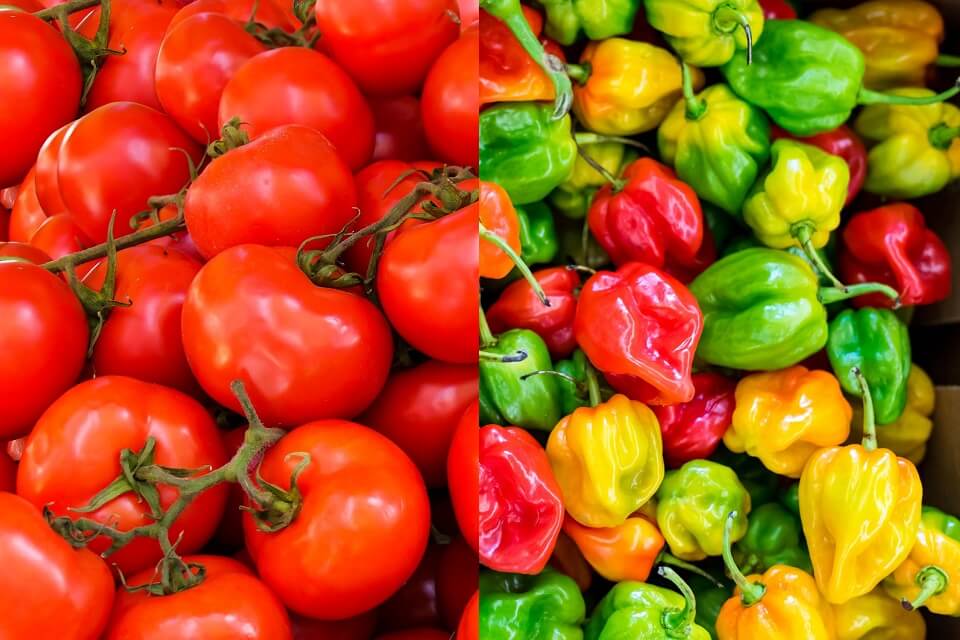
The allure of gardening often brings unexpected surprises, and among the most perplexing is the moment when your tomatoes bear an uncanny resemblance to their distant cousins, the peppers. This phenomenon of nature’s mimicry sparks curiosity and bafflement in even the most seasoned gardeners. Let’s delve into the intriguing world of botany to decipher the potential reasons behind this perplexing similarity.
Table of Contents
Why Do My Tomatoes Look Like Peppers?
When your tomatoes resemble peppers, it’s often a surprising and puzzling occurrence for gardeners. Several factors might contribute to this unexpected resemblance:
Cross-Pollination
Sometimes, cross-pollination between different plants within the same family (such as tomatoes and peppers) can occur, leading to hybridization. While tomatoes and peppers belong to the same botanical family (Solanaceae), the likelihood of natural cross-pollination between them in a home garden is relatively low. However, if you’ve saved seeds from hybrid plants or if you’re growing different varieties close together, it could lead to unexpected traits in the next generation.
Genetic Mutations
Genetic mutations can occasionally cause unexpected changes in plant characteristics. These mutations might result in tomatoes that display traits similar to peppers in terms of shape, color, or size. These mutations can arise spontaneously or due to environmental factors.
Environmental Factors
Environmental stressors such as extreme temperatures, nutrient deficiencies, or irregular watering can sometimes cause unusual changes in tomato fruits. Stress during flowering or fruit development stages might alter the appearance of the tomatoes, leading them to resemble peppers.
Mislabeling or Misidentification
Occasionally, there might be errors in plant labeling or identification. What was believed to be a tomato plant could actually be a different Solanaceae species that produces pepper-like fruits.
Optimizing Tomato Growth: Ensuring Expected Characteristics
To address this issue and ensure your tomatoes develop their expected characteristics:
Isolate Varieties
To prevent cross-pollination and maintain the distinct traits of different tomato varieties, planting them farther apart (around 20 to 30 feet) reduces the chances of their pollen mixing. This separation helps preserve each variety’s genetic purity and ensures that they grow with their expected characteristics. Techniques like using physical barriers or timing planting to avoid overlapping flowering periods can also aid in preventing unintended hybridization. Regular observation and maintenance throughout the growing season help ensure the preservation of each variety’s genetic.
Optimize Growing Conditions
To optimize growing conditions for tomatoes:
- Watering: Provide consistent moisture (1-2 inches per week) to prevent issues like blossom end rot.
- Nutrition: Use balanced fertilizers rich in nitrogen, phosphorus, and potassium or opt for organic options.
- Temperature: Maintain temperatures between 70°F to 85°F (21°C to 29°C) during the day and ensure proper soil drainage to prevent stress.
- Sunlight: Ensure 6-8 hours of sunlight daily for adequate photosynthesis and fruit production.
- Soil: Use well-draining soil with a pH of 6.0 to 6.8 and amend with compost for better fertility.
- Pest and Disease: Regularly check for pests or diseases and use natural remedies for control.
- Pruning and Support: Prune excess foliage, provide support, and maintain good air circulation for healthy growth and fruit development.
Creating these optimal conditions reduces plant stress and fosters healthy tomato growth.
Source Reliable Seeds or Seedlings
Purchase seeds or seedlings from reputable sources to minimize the risk of mislabeling or misidentification.
To ensure the quality and authenticity of tomato seeds or seedlings:
- Reputable Sources: Purchase from trusted suppliers or certified garden centers known for quality products.
- Quality Assurance: Reliable sources maintain high standards, reducing the risk of mislabeling or receiving the wrong variety.
- Varietal Purity: Trusted suppliers guarantee the purity of the tomato variety, essential for maintaining distinct traits.
- Expert Guidance: Reputable sources often offer guidance on optimal cultivation, care, and troubleshooting.
- Community Recommendations: Use gardening communities or reviews to gather information about reliable suppliers.
- Seed Packet Information: Review seed packets carefully for variety details and supplier information.
Choosing reliable sources ensures that your tomato plants grow as expected, preserving their intended characteristics and quality.
Conclusion
The resemblance between tomatoes and peppers can stem from various factors, including genetic diversity, environmental influences, or even deliberate crossbreeding efforts. While this similarity might intrigue or puzzle gardeners, it often reflects the inherent variability and adaptability of plants.
In essence, the phenomenon of tomatoes looking like peppers unveils the complex interplay between genetics, environment, and the diverse spectrum of plant traits. Embracing the marvels of nature’s diversity, this intriguing occurrence adds a touch of mystery and fascination to the world of gardening.
